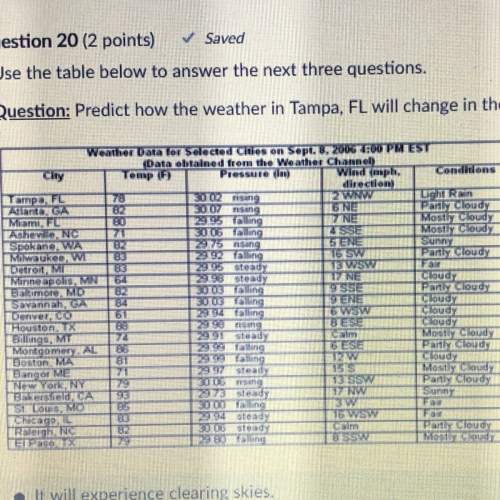
Physics, 26.02.2020 03:19 balochmisbah6626
A proton, a deuteron (a hydrogen nucleus containing one proton and one neutron), and an alpha particle (a helium nucleus consisting of two protons and two neutrons) initially at rest are all accelerated for the same time interval in the uniform electric field created by a very large charged plate.
Compare final kinetic energies of the proton and deuteron.
Compare final kinetic energies of the proton and alpha particle.
Compare final momentum magnitudes of the proton and deuteron.
Compare final momentum magnitudes of the proton and alpha particle.
Compare final speeds of the proton and deuteron
Compare final speeds of the proton and alpha particle.
Compare final distances of the proton and deuteron
Compare final distances of the proton and alpha particle
Compare changes in electric potential of the proton and deuteron.
Compare changes in electric potential of the proton and alpha particle.

Answers: 1
Another question on Physics

Physics, 21.06.2019 15:30
Iflow from a warmer object to a cooler object until both objects are the same temperature what am i?
Answers: 2

Physics, 22.06.2019 11:00
Engineers find a new metal that is stronger than steel but much lighter. this material is also significantly cheaper than what is currently used for most aircraft, available in large quantities, and easy to manufacture. the engineers are excited because this new material will lower the costs of buying and operating airplanes for companies. what is probably the best step for the engineers to make next?
Answers: 2

Physics, 22.06.2019 17:00
(a) if the pressure in gas is doubled while its volume is held constant, by what factor do (i) vrms and (ii) change? (b) is it possible to boil water at room temperature (20oc) without heating it? explain.
Answers: 3

Physics, 22.06.2019 21:20
People with normal vision cannot focus their eyes underwater if they aren't wearing a face mask or goggles and there is water in contact with their eyes. in a simplified model of the human eye, the aqueous and vitreous humors and the lens all have a refractive index of 1.40, and all the refraction occurs at the cornea, whose vertex is 2.60 cm from the retina.with the simplified model of the eye, what corrective lens (specified by focal length as measured in air) would be needed to enable a person underwater to focus an infinitely distant object? (be careful-the focal length of a lens underwater is not the same as in air! assume that the corrective lens has a refractive index of 1.62 and that the lens is used in eyeglasses, not goggles, so there is water on both sides of the lens. assume that the eyeglasses are 2.05cm in front of the eye.)
Answers: 3
You know the right answer?
A proton, a deuteron (a hydrogen nucleus containing one proton and one neutron), and an alpha partic...
Questions


Mathematics, 26.06.2019 10:00


English, 26.06.2019 10:00



History, 26.06.2019 10:00

Mathematics, 26.06.2019 10:00

Arts, 26.06.2019 10:00

Social Studies, 26.06.2019 10:00


Mathematics, 26.06.2019 10:00



History, 26.06.2019 10:00

Biology, 26.06.2019 10:00

Mathematics, 26.06.2019 10:00

Mathematics, 26.06.2019 10:00

History, 26.06.2019 10:00

Mathematics, 26.06.2019 10:00




